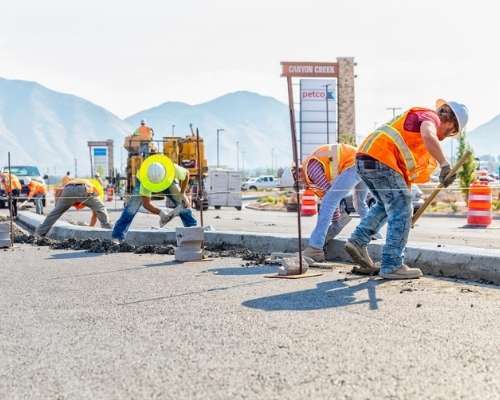5 Minute Read
October 28, 2021
0%
After a year’s worth of challenges, ranging from COVID-19 surges to labor struggles and more, November produced some much-needed good news for the construction industry. New projects, new markets and new opportunities are all painting a picture of what could be a very bright future ahead … so long as contractors continue to modernize their operations and adapt to new ways of working.

After months of political wrangling, Congress has finally passed the White House’s proposed $1.2 trillion infrastructure spending package. The bipartisan 228-to-206 vote of approval in the House is the final milestone for the bill, which has long been held up while debate raged around an even larger spending package. The bill was signed into law by President Biden on Nov. 15.
Originally introduced by the Biden administration as the American Jobs Plan, the bill morphed into the Infrastructure Investment and Jobs Act, but has seen steady bipartisan support, as many in Congress agree there is a pressing need to address the nation’s crumbling infrastructure. Initial estimates for the spending bill were as high as $3 trillion, but concerns about costs pared the final bill back to the $1.2 trillion figure.
The Takeaway: Most of the collective AEC ecosystem is breathing a much-needed sigh of relief. The infrastructure bill is expected to infuse billions of dollars into the construction landscape for years to come, and contractors are poised to benefit from a windfall of new, badly needed, infrastructure projects. However, contractors will also need to make sure they can scale operations to meet modern demands and strict federal oversight requiring real-time data, connected construction workflows, and leading-edge technologies. Be sure to visit our Construction Infrastructure Resource Center, as we follow the next steps and what contractors can expect.

When construction first began on the Fontainebleau resort casino project in Las Vegas nearly 15 years ago, it was expected to quickly become Las Vegas’ most lavish property, with a price tag expected to well exceed the $1 billion mark. The project stalled, however, amid a recession, bankruptcy and a series of new owners each with their own plans and struggles. Now the project looks like it will finally move ahead, as original project owner Jeffrey Soffer’s Fontainebleau Development plans to open the hotel and casino at the end of 2023.
The original project went over its budget and a Chapter 11 bankruptcy stopped construction before its planned 2008 opening on the Las Vegas Strip. Businessman Carl Icahn bought the bankrupt project in 2010, and then sold it in August 2017 to Witkoff Group and New Valley LLC for $600 million. That group planned to open the resort as Drew Las Vegas. Marriott signed on to the project in 2018, but pulled out. Fontainebleau Development and partner Koch Real Estate Investments re-acquired the property in February 2021. Construction alone on the project will create about 3,200 jobs, while the resort plans to employ about 6,000 permanent workers once it opens.
The Takeaway: This is great news. The dormant project has become an eyesore among the Las Vegas skyline and residents and visitors alike wondered if anything would ever happen with the unfinished resort. Let’s hope there are no further complications, but it’s yet another sign that despite a pandemic, rising costs and other challenges, the ultimate outlook for construction remains strong in the years ahead.

The surge in popularity of online gaming and electronic sporting events over the past few years has resulted in a new $1 billion (and growing) market. That surge is bringing a new multi-million-dollar wave of new construction projects to the table for contractors.
Construction Dive in November took a look at the growing online gaming market’s impact on construction. While streaming online platforms like Twitch have proven big hits for watching the online competitions of other players, there has also been a significant increase in live audience venue events. So big have these become that several e-sports arenas have already been built, with plenty more planned or proposed — the largest being the recently approved 108,000-square-foot SURGE Arena in Chicago.
The Takeaway: More proof that even though virtual work and play is helping us through a pandemic, it does not mean that brick and mortar business operations are long gone. In fact, brick and mortar is being redefined, and leading-edge contractors with leading-edge construction technologies are helping cement a new path forward.
Want more takes on news and issues permeating the construction industry? Be sure to subscribe to our blog for the latest trends and industry news, or visit viewpoint.com to learn how leading-edge technologies can help grow your construction operations.
5 Minute Read
October 28, 2021
6 Minute Read
October 5, 2021
6 Minute Read
September 1, 2021